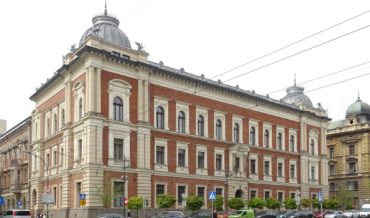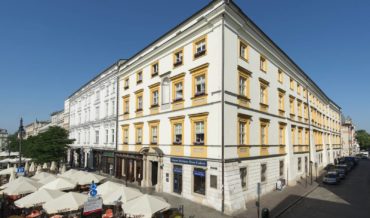Contents
- 1 Key Facts
- 2 Early Life and Education
- 3 Academic Career and Teaching
- 4 Theatrical Career
- 5 Wartime Activities and Cultural Preservation
- 6 Artistic Works and Diverse Creative Output
- 7 Cultural Life and Zielony Balonik
- 8 Literary and Journalistic Work
- 9 Artistic Legacy and Museum Collections
- 10 Critical Reception and Artistic Impact
- 11 Impact on Polish Culture
Key Facts
- Born: 1877 in Cieszków, Died: 1963 in Kraków
- Professions: Set designer, graphic artist, painter, director, and professor
- Education: Munich University of Technology, Academy of Fine Arts in Kraków, specialized studies in Vienna, Paris, and London
- Key positions: Director of Słowacki Theater, Professor at Academy of Fine Arts, Set designer for National Theater Warsaw
- Artistic legacy: Over 70 works in National Museum, 6 in Historical Museum of Kraków
- Notable association: Active member of the famous Zielony Balonik cabaret
Early Life and Education
Karol Frycz was born in Cieszków in 1877 and became one of the most versatile and influential artists in early 20th-century Polish culture. His comprehensive artistic education laid the foundation for his multifaceted career that would span nearly seven decades until his death in Kraków in 1963.
Frycz's educational journey began at the Faculty of Architecture of the Munich University of Technology, where he developed his technical skills and understanding of spatial design. This architectural background would prove invaluable in his later work as a set designer, as he brought structural precision and spatial awareness to theatrical environments. He then continued his studies in Kraków at the Academy of Fine Arts, deepening his knowledge of artistic traditions and Polish cultural heritage.
Specialized Training in Stage Design
Recognizing the importance of specialized knowledge in his chosen field, Frycz pursued stage design studies in Vienna, which was then one of Europe's leading centers for theatrical innovation and the birthplace of modern stage design principles. His educational journey didn't stop there – he continued his studies in Paris and London, exposing himself to the diverse artistic movements including Art Nouveau and early modernist approaches that were revolutionizing European theater. This international perspective would later influence his innovative approach to stage design, characterized by a sophisticated blend of architectural precision and symbolic visual elements.
Academic Career and Teaching
Early Teaching Experience
Frycz began his teaching career by lecturing on art history at A. Baraniecki's courses, where he shared his extensive knowledge of European art traditions with aspiring artists and intellectuals. His pedagogical approach emphasized the connection between historical artistic movements and contemporary practice, quickly gaining recognition in Kraków's academic circles.
Professorship at the Academy of Fine Arts
His academic career reached its pinnacle when he became a professor and lectured at the Academy of Fine Arts. In this role, Frycz influenced generations of Polish artists, sharing not only his technical expertise but also his international perspective on interdisciplinary art forms. His teaching methodology combined theoretical knowledge with practical experience, instilling in his students a strong sense of spatial composition and an appreciation for breaking traditional boundaries between artistic disciplines. Many of his students went on to become prominent figures in Polish visual arts and theater design.
Theatrical Career
Set Designer for Major Theaters
Frycz's reputation as a set designer led to his appointment as the set designer of the National Theater in Warsaw, one of Poland's most prestigious theatrical institutions. His innovative designs for classical Polish dramas and contemporary works created atmospheric stage environments that enhanced narrative storytelling through visual means, making him highly sought after in Polish theater circles.
His most significant theatrical appointment came when he became the set designer of the Słowacki Theater in Kraków, a position that would define much of his professional life. The Słowacki Theater, named after the great Polish Romantic poet Juliusz Słowacki, was one of Kraków's most important cultural institutions. Frycz's revolutionary designs for productions of Polish Romantic dramas, including works by Słowacki and Mickiewicz, incorporated innovative lighting techniques and symbolic architectural elements that transformed how classical Polish literature was presented on stage.
Director of Słowacki Theater
Frycz's talents extended beyond set design, and he eventually became the Director of the Słowacki Theater. In this leadership role, he was responsible for the theater's artistic vision, programming, and overall creative direction. His tenure as director was marked by innovative productions that seamlessly combined his visual artistry with his deep understanding of Polish dramatic literature and contemporary European performance trends, establishing the theater as a leading center for theatrical experimentation in Central Europe.
Wartime Activities and Cultural Preservation
Work During World War II
During the challenging period of World War II, when many cultural institutions were threatened or destroyed, Frycz demonstrated his commitment to preserving Polish cultural heritage. He worked in the Hutten-Czapski Collection in Krakow, helping to protect valuable artworks, historical artifacts, and rare manuscripts during the German occupation. This work was not only professionally important but also represented a form of cultural resistance against the systematic destruction of Polish intellectual and artistic heritage by the occupying forces, contributing to the preservation of Poland's cultural memory during one of its darkest periods.
Artistic Works and Diverse Creative Output
Range of Artistic Media
Frycz's artistic versatility was remarkable, encompassing multiple disciplines and media. His work included graphics, painting, mosaics, caricatures and polychrome, demonstrating his mastery of both traditional techniques and contemporary artistic innovations. His graphic works often featured bold linear compositions influenced by the Vienna Secession movement, while his paintings reflected the symbolic and decorative tendencies of the Young Poland artistic movement. This diversity reflected his philosophy that an artist should transcend the boundaries of single media to create comprehensive artistic experiences.
Monument Restoration and Church Decorations
Beyond his theatrical and fine art work, Frycz was actively involved in cultural preservation and religious art. He took part in restorations of historic monuments throughout Kraków, applying his technical architectural knowledge and artistic sensitivity to preserve important examples of Polish Gothic and Renaissance heritage. Additionally, he created painting decorations for several churches in the Kraków region, contributing to the rich tradition of Polish ecclesiastical art and ensuring that religious spaces remained vibrant centers of artistic expression that connected historical traditions with contemporary artistic vision.
Cultural Life and Zielony Balonik
Involvement in Kraków's Bohemian Scene
One of the most colorful aspects of Frycz's career was his involvement with the legendary Cabaret "Zielony Balonik" (Green Balloon). This famous Kraków cabaret, active from 1905-1915, was a central hub for the Young Poland movement's artistic and intellectual ferment, serving as a meeting place for Poland's most prominent artists, writers, and intellectuals during a period of intense cultural creativity despite political oppression.
In Zielony Balonik, Frycz was involved in literary and acting activities, showcasing yet another facet of his artistic personality. He designed satirical puppets, created artistic invitations, and painted humorous compositions that became legendary among Kraków's intellectual elite. His puppet designs for the cabaret's performances were particularly innovative, combining traditional Polish folk art elements with modernist artistic principles, while his theatrical posters and invitations became collectible works of art that captured the cabaret's spirit of irreverent creativity. His contributions to Kraków's cabaret scene exemplified the city's vibrant artistic culture during this transformative period.
Creative Contributions to Popular Culture
His work with Zielony Balonik demonstrated Frycz's remarkable ability to engage with popular culture while maintaining the highest artistic standards. The satirical puppets he designed and the humorous compositions he created showed his understanding that art could simultaneously serve as sophisticated cultural commentary and accessible entertainment, serious artistic expression and playful social critique.
Literary and Journalistic Work
Prolific Writer and Cultural Critic
Beyond his visual and theatrical arts, Frycz was also a prolific writer and cultural commentator. He wrote extensively in leading Polish cultural journals and newspapers, contributing insightful articles, theater reviews, and theoretical essays that provided sophisticated analysis of contemporary artistic developments. His writings offered influential theoretical frameworks for understanding the role of interdisciplinary art in modern society and the relationship between Polish cultural traditions and European artistic movements. His critical essays on stage design became essential reading for theater professionals and helped establish theoretical foundations for modern Polish scenography.
Artistic Legacy and Museum Collections
National Museum Collection
The scope of Frycz's artistic output is evidenced by the substantial representation of his work in major cultural institutions. Over 70 works are housed in the National Museum in Kraków, including significant examples of his graphic series, stage design sketches for major theatrical productions, and painted compositions from his various creative periods. This comprehensive collection demonstrates the evolution of his artistic style from early academic realism through his mature synthesis of Polish folk traditions and European modernist influences.
Historical Museum of Kraków
The Historical Museum of Kraków houses 6 of his most historically significant works, which document and celebrate the city's cultural transformation during the early 20th century. These pieces include his graphic series depicting Kraków's architectural heritage and satirical compositions reflecting the city's intellectual life during the interwar period.
Academy of Fine Arts Collection
Several representative works are also held by the Academy of Fine Arts, where Frycz taught for many years. This collection includes his theoretical sketches on stage design principles and exemplary graphic works that continue to serve as teaching materials for current students, allowing them to study the techniques and artistic philosophy of one of their institution's most distinguished professors.
Critical Reception and Artistic Impact
Contemporary critics recognized Frycz as a pioneering figure in modern Polish stage design, though some initially found his early academic works overly traditional before he developed his distinctive interdisciplinary approach. His innovative integration of architectural principles with theatrical design was particularly praised by European theater critics, who noted his ability to create stage environments that functioned as active participants in dramatic narratives rather than mere decorative backgrounds.
Impact on Polish Culture
Karol Frycz represents the ideal of the complete artist-intellectual who was particularly important in Polish culture during the late 19th and early 20th centuries. His work successfully bridged the gap between high art and popular culture, between Polish cultural traditions and international artistic innovations, and between academic theory and practical creative application. Working primarily in Kraków's Old Town, where most of the city's major cultural institutions were located, he became an integral part of the city's artistic fabric.
His deep connection to Polish cultural heritage was reflected not only in his theatrical work but also in his appreciation for Poland's royal and cultural traditions, including those preserved at Wawel Castle. This connection to Poland's historical legacy influenced his approach to stage design and cultural preservation work. His contemporary at the Academy of Fine Arts, the legacy of great Polish artists like Jan Matejko, whose memory is preserved at the Jan Matejko House, provided inspiration for Frycz's own commitment to Polish artistic traditions.
His extraordinary longevity, spanning from the final decades of the 19th century well into the second half of the 20th century, allowed him to witness and actively participate in some of the most significant cultural and historical transformations in Polish history. Through his various roles – as educator, theater director, visual artist, cultural critic, and heritage preservationist – he helped shape the cultural landscape of Kraków and contributed to the development of a distinctly Polish approach to interdisciplinary artistic practice that influenced subsequent generations of Polish artists.
His legacy continues to inspire contemporary Polish artists who seek to combine traditional cultural values with innovative artistic expression, making him a lasting figure in Poland's cultural memory and an enduring symbol of artistic versatility and cultural commitment.

